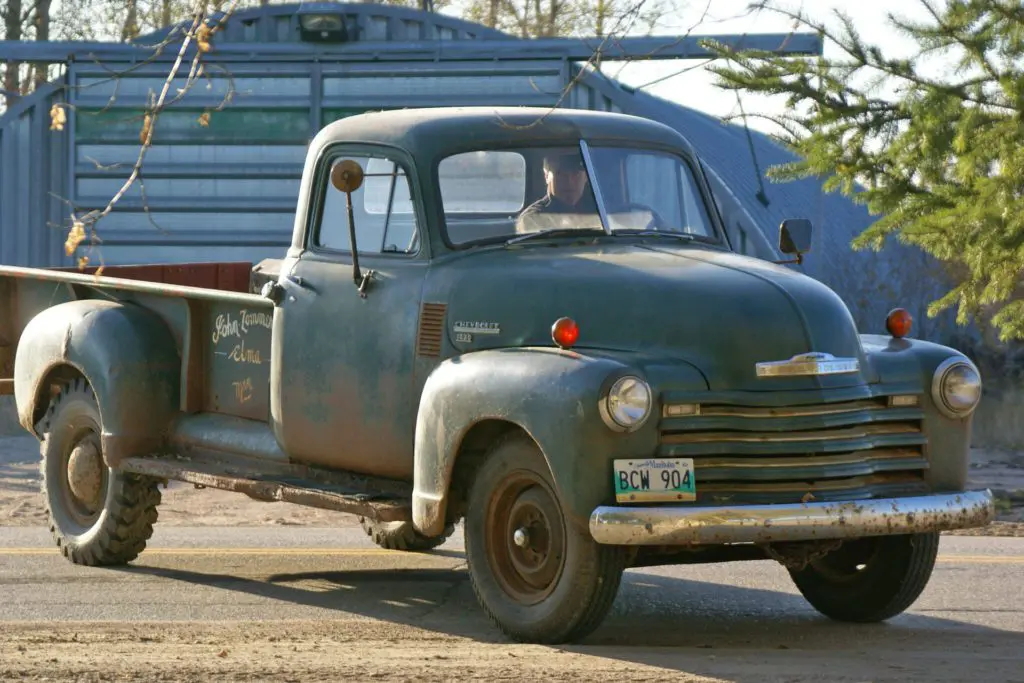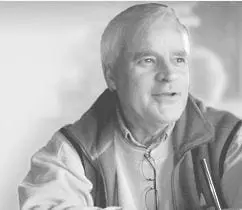MY GREAT FOLLY: ADVENTURES IN RESTORATION
In the beginning, it sounded like such a good idea!
As the owner of a small business promoting heritage, it only made marketing sense to develop a strong, iconic brand – like a vintage truck – to shout out to the world that we were in the history business. Miraculously, there was such a truck.
Through a relative living north of Winnipeg, we learned there was a GMC farm vehicle that had been purchased new from Carter Motor Sales in Winnipeg in 1954. It had faithfully served its original owner, a grain farmer from Whitemouth, Manitoba for decades until his passing. Now, it was living a rusting retirement in a barn on the property. The farmer’s son was looking to sell it – for $800. This was fate.

I have owned old vehicles before. My first car was a 1954 Chevrolet purchased for $75 by my Dad who I think felt it was a wise investment since it kept me from driving his car. It was simply awesome – even if the heater remained on high all year round. When it could carry on no longer, and I was asking again for the keys to my Dad’s Buick, he found a 1956 Plymouth, a very sleek, two-tone car. The lower half was painted a kind of snot-green colour. The upper half was a darker green I called gangrene. Aside from its distinctive looks, that car refused to go into reverse. This required advanced driving skills, as you had to plan your parking spots carefully.
So during a spring not so long ago, my life partner and I started driving out west as part holiday and part mission to return this vintage 1950’s farm vehicle to our hometown of Picton. Some of the trip was made through the northern United States, something that was possible in the Obama era when Canadians were not considered a national security threat. Within a few days, we arrived at our cousin’s place where the holy grail of trucks rested stately on a front lawn.
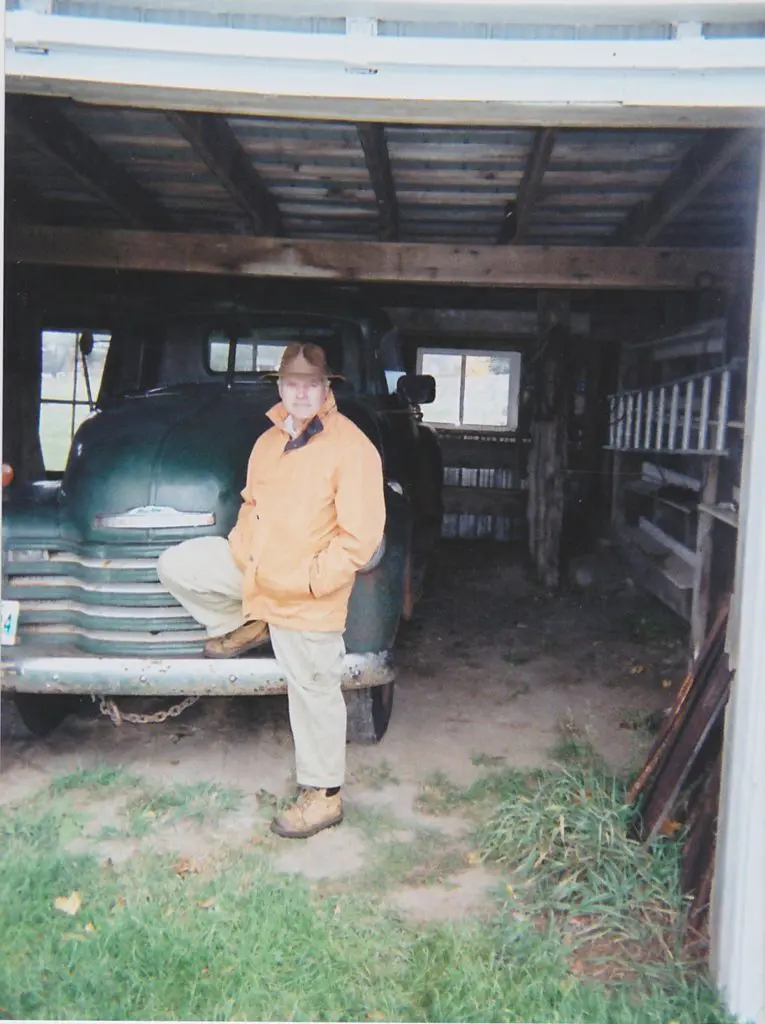
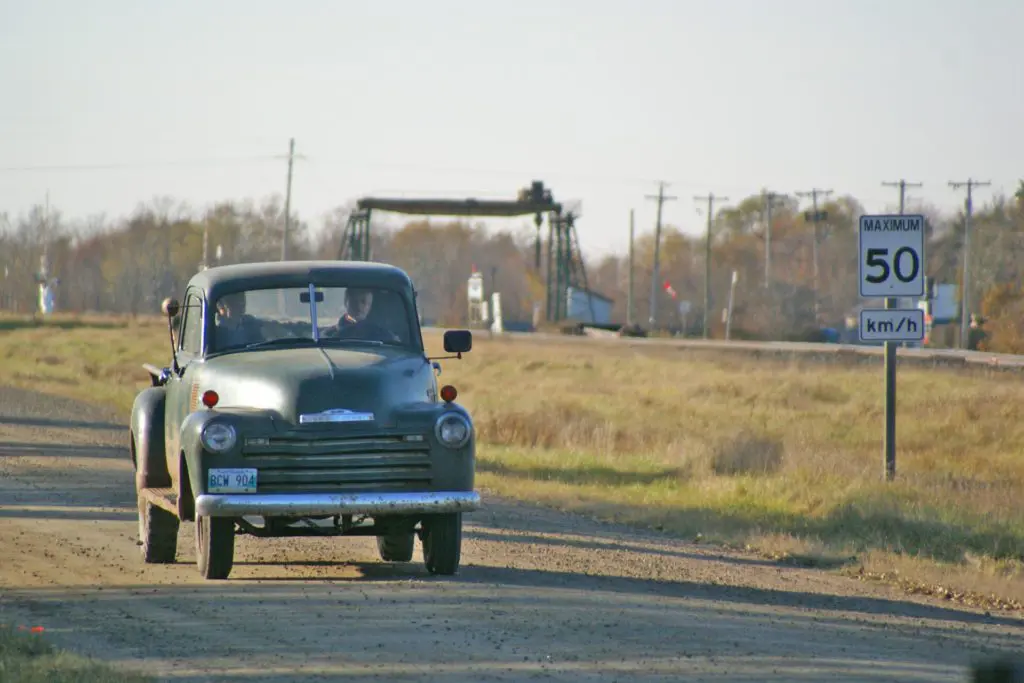
It was green, rusted, and big – much bigger than anticipated. A one-ton rather than a half-ton, a fact that proved to be very significant during our return journey home. And yet, it worked. Pressing on the starter pedal on the floor, with just the slightest touch on the trombone-like choke, and a robust push on the gas pedal, its mighty engine started with a deep, throaty rumble and we were off driving down a dirt side road. Despite the considerable amount of engine exhaust that came up through the floorboards, the hand-cranked windows worked well and I was in love.
Love – especially in its earliest days – can be oblivious to a great many things. So when we were gliding into our relative’s driveway and his garage, I overlooked the small matter of the brakes that didn’t work. And of course, it wasn’t my garage anyway! But it seemed timely to leave soon after that unfortunate incident, and we loaded this metal behemoth onto a U-Haul rental trailer to head home.
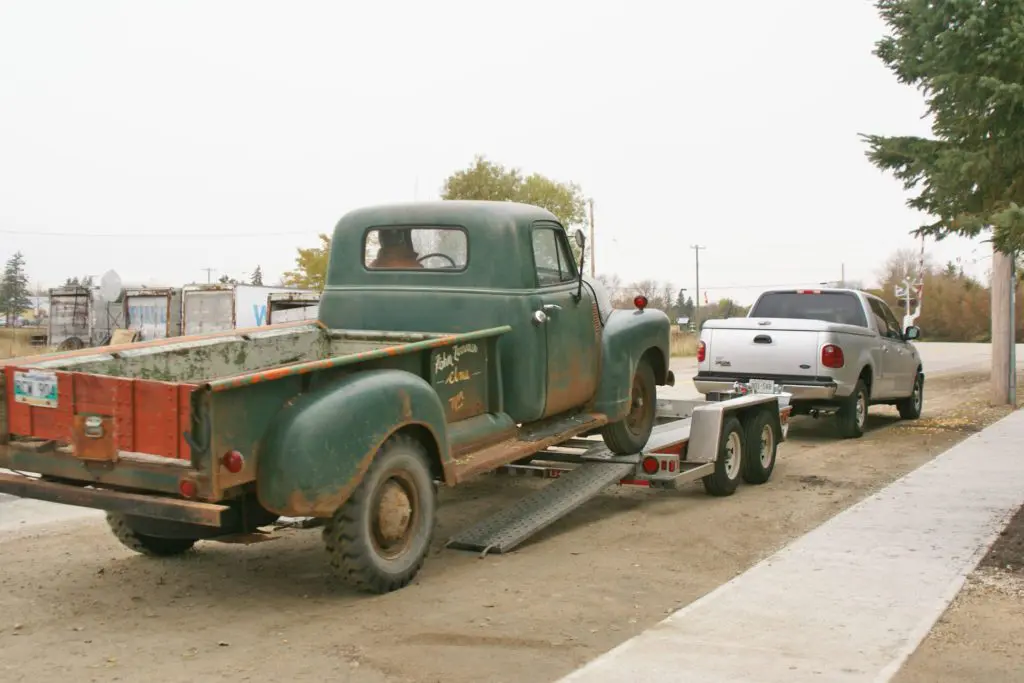
I should state at this point that I am not a very mechanical person. I am actually something of a hazard with power tools. I once had a job as an apprentice working in a machine shop. I broke their industrial saw the first day on the job. The next day, my overalls caught fire on the pilot lights for the shop’s welding torches. Later that week, my newly – acquired welding expertise turned a small car part into a tiny, red glowing ball of burning metal that is likely still attached to a work bench in the shop.
I am hopeful that the owner of that car part has mellowed over the intervening years.
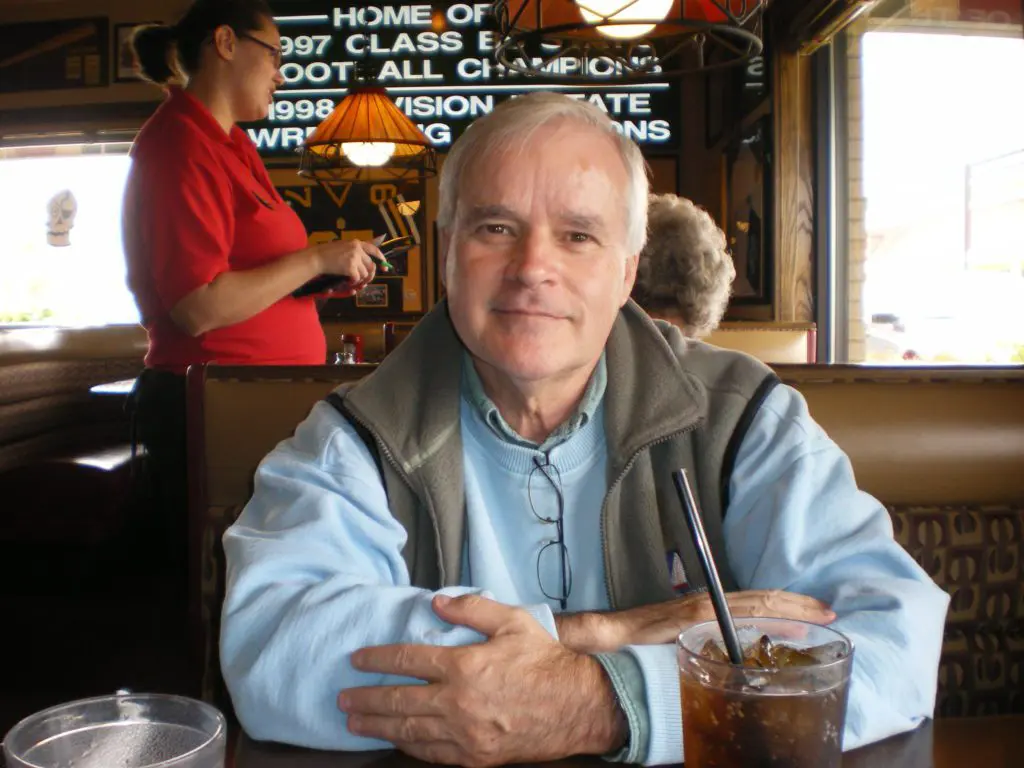
When I buy a vehicle, I do look under the hood as it seems expected – part of the etiquette of the purchase. I may gaze intently, and maybe even fiddle with some wiring. But I have no idea what I am looking at. I am quite satisfied to know that my car does come with an engine and I’ll let it go at that. I don’t think I am alone in this. I believe there are many men who don’t possess this expected mechanical ability. They just aren’t writing about it.
So, in loading my prized antique truck onto the U haul trailer for the trip back to Ontario, I was oblivious to the great forces that can be unleashed when a weight is not sufficiently distributed on the ball of a trailer. This is likely something Isaac Newton wrote about centuries ago. But I never knew the guy. I discovered these great laws of nature for myself as we drove down a steep hill near Dryden, Ontario, when the trailer decided it wanted to be the lead vehicle, and we were thrown violently from one side of the road to the other as my F -150, a heavy vehicle in its own right, was simply no match for this pitching trailer and its heavy load.
My partner observed that we were on a bridge with a steep ravine below us, and that there were transport trucks heading in our direction. She speculated that this just might be the end of things. This, of course, was very helpful to know. As a much older and wiser man now, I have learned there is a time to speak up – and a time to say nothing. Somehow in these moments of eerie silence occasionally punctuated with her screams, I did manage to get the trailer back into position and we drove slowly into Dryden. The next morning, the old truck was on its way via commercial transport to its new home in Picton. We enjoyed the rest of our leisurely, stress – free drive home. With meals, gas and hotels, it had been a bargain adventure for only $4,500.
I decided to have the truck restored. Now, I wouldn’t say you have to be crazy to do this. But it helps, because you are about to begin a long and perilous journey into the unknown – the sort of great abyss of restoration.
An early indication of this soon came from the guys at the garage. It turned out there wasn’t a whole lot worth restoring on my 1952 GMC one ton. Useful parts seemed limited to the side mirrors, a couple of fenders, and the throaty motor. However, it wasn’t all bad news. They knew of another truck that was partially restored – a 1954 Chevrolet half-ton, which I could – and did – purchase for $8,500. The theory at the time was that a 1952 GMC one-ton and a 1954 Chevrolet half-ton were highly compatible and could be blended together. As it turned out, this was fake news.
We moved forward: “In for a penny, in for a pound.”

Given my mechanical abilities, the garage guys prudently kept me away from welding torches, and the mysterious inner workings of their shop. My job was to make frequent runs to the U.S. and to Bill’s Truck Shop near Oshawa for parts. I also wrote cheques on a regular basis. I’ve forgotten how many. Somewhere along the way, I simply lost track. I focused on the positive – the original $800 purchase price had been a bargain; an absolute steal.
Over the next two years, the spread of innumerable parts on a shop floor gradually evolved into something that looked like a truck. And after a few months of intense negotiations with the licensing vehicle department who were initially not satisfied with a bill of sale, the original VIN registration form, and paperwork documenting the import of the Chev truck into Canada in the 1970s, the day finally came when I could legally drive my most prized possession (and retirement fund) onto county roads.
It was awesome – close to a religious experience really. The stick shift on the floor, the rumble of the original GMC engine, the wind through the windows, and the looks of other drivers and pedestrians along the road. At my age, I wouldn’t call the truck a “chick magnet,” but safe to say it is a “seniors magnet” that draws a crowd wherever I stop.
My only issue that first driving season – really a small concern within the sheer ecstasy of this dream vehicle – was its fuel consumption. After a short 15 – minute ride, I needed to fill it up again. Rocket ships get better mileage. Turned out it was a leaking fuel pump. This seemed to cause considerable excitement from the garage guys when I left the truck running outside their establishment. It was somewhat reminiscent of the excitement I caused when I caught fire in the welding shop many years ago.
To be fair, this seems to have been the last of the mechanical issues I have endured. (Of course, it’s early in the season yet. But I am a “glass is half full” kind of guy.) So, I’ll be on the roads of Prince Edward County again this summer. And when the touring season ends, and the vehicle goes back into winter storage, I will still love my truck – perhaps even more – as it is so much cheaper to own then.

